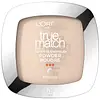What's inside
What's inside
 Key Ingredients
Key Ingredients

 Benefits
Benefits

 Concerns
Concerns

 Ingredients Side-by-side
Ingredients Side-by-side

Water
Skin ConditioningTitanium Dioxide
Cosmetic ColorantGlycerin
HumectantC12-15 Alkyl Benzoate
AntimicrobialDisiloxane
Skin ConditioningDiethylhexyl Butamido Triazone
UV AbsorberCaprylyl Methicone
Skin ConditioningPEG-30 Dipolyhydroxystearate
EmulsifyingButyl Methoxydibenzoylmethane
UV AbsorberPolysilicone-15
UV FilterEthylhexyl Salicylate
UV AbsorberButylene Glycol Cocoate
EmulsifyingOctyldodecanol
EmollientDimethicone
EmollientCetyl PEG/PPG-10/1 Dimethicone
EmulsifyingEthylhexyl Methoxycrylene
Skin ConditioningDipropylene Glycol Dibenzoate
EmollientSilica
AbrasiveEthylhexyl Triazone
UV AbsorberOctyldodecyl Xyloside
EmulsifyingMagnesium Sulfate
Disteardimonium Hectorite
StabilisingPolypodium Leucotomos Leaf Extract
Skin ProtectingPhysalis Angulata Extract
Skin Protecting3-O-Ethyl Ascorbic Acid
Skin ConditioningEthylhexyl Ferulate
AntioxidantFerulic Acid
AntimicrobialArabidopsis Thaliana Extract
AntioxidantMelanin
Skin ProtectingCaffeic Acid
AntioxidantLecithin
EmollientCaprylic/Capric Triglyceride
MaskingTocopheryl Acetate
AntioxidantButylene Glycol
HumectantPanthenyl Triacetate
Oxothiazolidine
Skin ProtectingBHT
AntioxidantPPG-15 Stearyl Ether Benzoate
EmollientCaprylyl Glycol
EmollientEthyl Linoleate
EmollientPhenylpropanol
MaskingTocopherol
AntioxidantOleyl Alcohol
EmollientPropanediol
SolventSodium Benzoate
MaskingDisodium EDTA
Phenoxyethanol
PreservativeParfum
MaskingLinalool
PerfumingLimonene
PerfumingCI 77491
Cosmetic ColorantCI 77492
Cosmetic ColorantCI 77499
Cosmetic ColorantWater, Titanium Dioxide, Glycerin, C12-15 Alkyl Benzoate, Disiloxane, Diethylhexyl Butamido Triazone, Caprylyl Methicone, PEG-30 Dipolyhydroxystearate, Butyl Methoxydibenzoylmethane, Polysilicone-15, Ethylhexyl Salicylate, Butylene Glycol Cocoate, Octyldodecanol, Dimethicone, Cetyl PEG/PPG-10/1 Dimethicone, Ethylhexyl Methoxycrylene, Dipropylene Glycol Dibenzoate, Silica, Ethylhexyl Triazone, Octyldodecyl Xyloside, Magnesium Sulfate, Disteardimonium Hectorite, Polypodium Leucotomos Leaf Extract, Physalis Angulata Extract, 3-O-Ethyl Ascorbic Acid, Ethylhexyl Ferulate, Ferulic Acid, Arabidopsis Thaliana Extract, Melanin, Caffeic Acid, Lecithin, Caprylic/Capric Triglyceride, Tocopheryl Acetate, Butylene Glycol, Panthenyl Triacetate, Oxothiazolidine, BHT, PPG-15 Stearyl Ether Benzoate, Caprylyl Glycol, Ethyl Linoleate, Phenylpropanol, Tocopherol, Oleyl Alcohol, Propanediol, Sodium Benzoate, Disodium EDTA, Phenoxyethanol, Parfum, Linalool, Limonene, CI 77491, CI 77492, CI 77499
Talc
AbrasiveZea Mays Starch
AbsorbentDimethicone
EmollientZinc Stearate
Cosmetic ColorantPentaerythrityl Tetraisostearate
EmollientOctyldodecyl Stearoyl Stearate
EmollientZeolite
AbsorbentSorbic Acid
PreservativeMethylparaben
PreservativePropylparaben
PreservativeTocopheryl Acetate
AntioxidantTetrasodium EDTA
Butylparaben
MaskingBHT
AntioxidantPanthenol
Skin ConditioningCI 77491
Cosmetic ColorantCI 77492
Cosmetic ColorantCI 77499
Cosmetic ColorantCI 77891
Cosmetic ColorantMica
Cosmetic ColorantCI 77007
Cosmetic ColorantCI 15850
Cosmetic ColorantTalc, Zea Mays Starch, Dimethicone, Zinc Stearate, Pentaerythrityl Tetraisostearate, Octyldodecyl Stearoyl Stearate, Zeolite, Sorbic Acid, Methylparaben, Propylparaben, Tocopheryl Acetate, Tetrasodium EDTA, Butylparaben, BHT, Panthenol, CI 77491, CI 77492, CI 77499, CI 77891, Mica, CI 77007, CI 15850
Ingredients Explained
These ingredients are found in both products.
Ingredients higher up in an ingredient list are typically present in a larger amount.
BHT is a synthetic antioxidant and preservative.
As an antioxidant, it helps your body fight off free-radicals. Free-radicals are molecules that may damage your skin cells.
As a preservative, it is used to stabilize products and prevent them from degrading. Specifically, BHT prevents degradation from oxidation.
The concerns related to BHT come from oral studies; this ingredient is currently allowed for use by both the FDA and EU.
However, it was recently restricted for use in the UK as of April 2024.
Learn more about BHTCi 77491 is also hydrated iron III oxide. It's sole purpose is to give a red/pink hue to products.
Iron III oxides are classified as inorganic chemicals for coloring.
Synthetically created Ci 77491 is considered safer than those naturally found. This is because the synthetically created version may contain less impurities. Iron oxides are generally non-toxic and non-allergenic.
Learn more about CI 77491Ci 77492 is also hydrated iron III oxide. It's sole purpose is to give a yellow hue to products.
Iron III oxides are classified as inorganic chemicals for coloring.
Synthetically created Ci 77492 is considered safer than those naturally found. This is because the synthetically created version may contain less impurities. Iron oxides are generally non-toxic and non-allergenic.
Learn more about CI 77492Ci 77499 is also hydrated iron III oxide. It is created from mixing red and black iron oxides. This helps give shades of darkness to a product.
Iron III oxides are classified as inorganic chemicals for coloring.
Dimethicone is a type of synthetic silicone created from natural materials such as quartz.
What it does:
Dimethicone comes in different viscosities:
Depending on the viscosity, dimethicone has different properties.
Ingredients lists don't always show which type is used, so we recommend reaching out to the brand if you have questions about the viscosity.
This ingredient is unlikely to cause irritation because it does not get absorbed into skin. However, people with silicone allergies should be careful about using this ingredient.
Note: Dimethicone may contribute to pilling. This is because it is not oil or water soluble, so pilling may occur when layered with products. When mixed with heavy oils in a formula, the outcome is also quite greasy.
Learn more about DimethiconeTocopheryl Acetate is AKA Vitamin E. It is an antioxidant and protects your skin from free radicals. Free radicals damage the skin by breaking down collagen.
One study found using Tocopheryl Acetate with Vitamin C decreased the number of sunburned cells.
Tocopheryl Acetate is commonly found in both skincare and dietary supplements.
Learn more about Tocopheryl Acetate